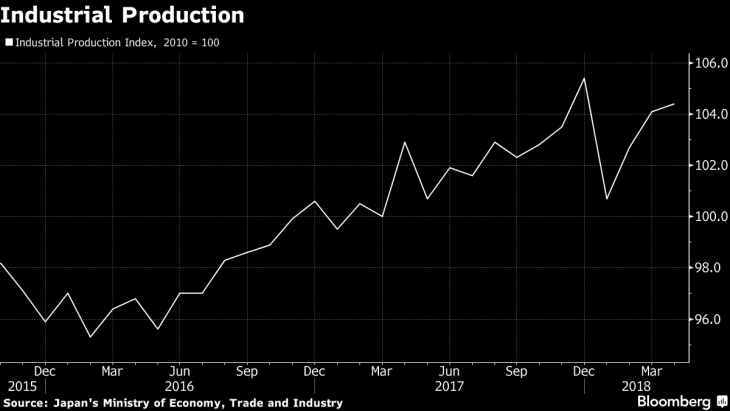Asia Stocks Mixed on Trade Tension; Yen Declines: Markets Wrap
Bloomberg.com — Asian stocks were mixed Friday, after the Trump administration’s tariffs on imports from key allies sent U.S. and European stocks into a tailspin and the dollar climbed against most major peers. The yen declined and Japanese bonds fell after the Bank of Japan cut purchases of some debt at its regular operations.
Shares in Japan rose, while Korean equities outperformed on better than expected export data. Australian stocks lagged alongside Chinese and Hong Kong shares. U.S. futures pointed higher. Earlier, the S&P 500 fell for the fourth time in five days, as the president’s escalation of trade tensions with Canada, Mexico and the European Union hammered American industrial and financial shares. The 10-year Treasury yield pared Thursday’s losses.

Investor focus returned to trade tensions, overshadowing reports that Italy is close to forming a government that is more EU-friendly than had been feared. The Trump administration’s unilateral action was met with retaliatory actions that could imperil economic growth. Traders are also bracing for Friday’s jobs report, with payrolls expected to rise and the unemployment rate seen holding at the lowest since 2000.
“The hard thing about protectionism, the hard thing about tariffs and quotas, is that you can almost think of it as it’s a slow-moving disease, but it’s deadly,” Kristina Hooper, Invesco’s chief global market strategist, said in an interview at Bloomberg’s New York headquarters. “When I look at protectionism, I don’t believe the market truly can price it in at this point because there’s still so many potential iterations.”
Elsewhere, oil fell as rising U.S. output overshadowed a surprise decline in crude stockpiles, with traders also focused on whether Saudi Arabia and Russia will boost production.
